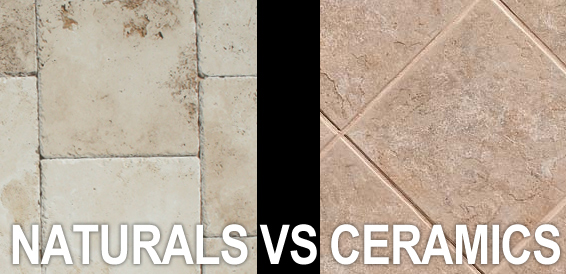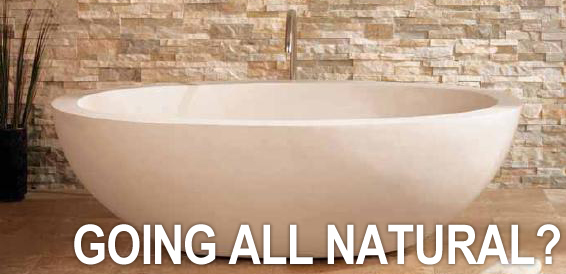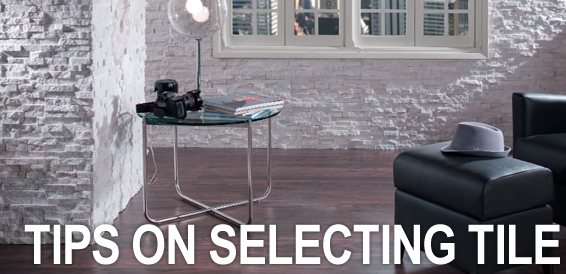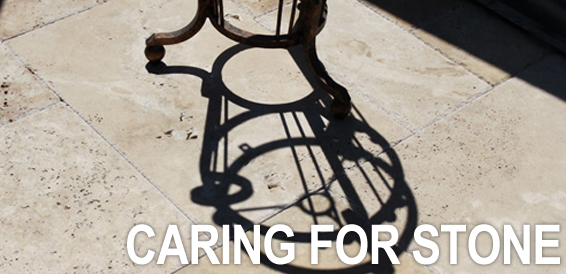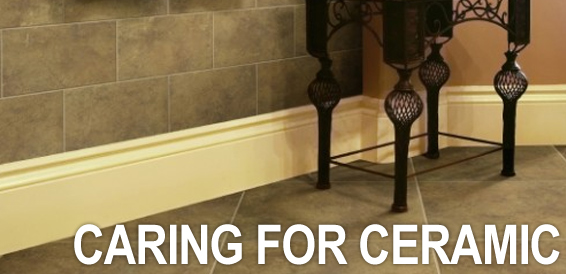Natural Stone vs. Ceramic Tile
Natural Characteristics
Understand that many natural stones may contain small naturally-occurring cracks (fissures), granite countertops may have some pitting and each stone has it’s own unique characteristics. Cracking and pitting are common complaints heard from consumers who were unaware of these characteristics when they selected natural stone. A common saying in the stone business: “If you want consistency and uniformity, then select porcelain tile”.
Installation Materials
The most common way to install ceramic (or porcelain) tiles is using the thin-set method with a 3/16″ or greater grout joint. Stones are commonly installed using a medium-bed or mud-bed installation with a grout joint 1/16″-3/16″. A thicker setting bed allows the installer to level the product and create a more level installation.
Installation Costs
Natural stone tiles and slabs are generally more expensive to install. This cost is primarily due to the overall difficulty of the installation combined with a tighter grout joint and buyers higher expectation of a flat floor.
Maintenance
If you own a large quantity of stone flooring, you will want to have it deep-cleaned on occasion. Also, most stones require a grout release before installation and a penetrating sealer after installation. A penetrating (or impregnating) sealer needs to be re-applied periodically per manufacturers instructions. Go to manufacturers websites for detailed maintenance instructions (i.e. crossville-ceramics.com, aquamix.com, miraclesealants.com, stonetechpro.com, etc.)
Vapor transmission
All stones breathe. This means they breathe up moisture from the slab and setting materials and they tend to breathe in moisture from external sources as well. This means all stones should be sealed using a penetrating sealer that allows vapor transmission, but inhibits staining. Vapor transmission also means that if you’re using a light stone over a large area, you may want to check the moisture in the slab (hydrostatic pressure) before installation begins. Keep in mind that as moisture passed from the slab to the stone, it’s possible to discolor some lighter stones from within the stone itself.
Frost resistance
Some slates are very frost resistant, which is why slate roofing is used in cold regions. However, other slates are simply not as condensed and will explode like a soda can in a freezer. Most stones are not suitable for outdoor installation in freeze-thaw conditions. Ceramic tiles with an absorption rating of over 3% are not generally suited for outdoor use as well. All porcelains (.5% absorption) have low absorption to be used outdoors, but the COF (Coefficient of Friction) must be suitable as well.
Wear resistance
Granites are the hardest of all natural stones, and there are some stone types that approach the hardness of granite. All polished stones scratch dull, yet some honed stones may be more difficult to clean than polished. A natural (through-body) porcelain tile can be up to 30% harder than granite.
Acid and Stain Resistance
Granites typically have superior resistance against staining. However, many common household products will stain or etch stone, yet most will have little or no effect on ceramic tile. For instance, an ice cold glass of water can etch ring on White Carrara marble. Vinegar, ketchup, mustard, fruit juice or wine will etch many stones. Again, look at sealant manufacturers websites for info on how to minimize (not eliminate) staining and etching.

